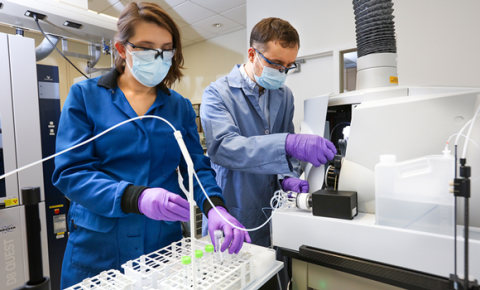
CMI researchers from Oak Ridge National Laboratory (ORNL) and Idaho National Laboratory (INL) have been working together to develop cost-effective technologies for the separation of in-demand, rare-earth elements (REEs). Powder Metallurgy Review reported the research and technology transfer. The research is supported by the DOE’s Advanced Manufacturing Office (AMO), and recently moved closer to commercialization through a licensing agreement on the production of CMI’s REE extractants by organic chemical manufacturer Marshallton Research Laboratory in North Carolina.
ORNL researchers developed a new extractant for REE separations by making structural changes to diglycolamide (DGA) ligands, organic molecules composed of carbon, hydrogen, oxygen, and nitrogen atoms, through the addition of substituents known as alkyls — fatty organic groups exclusively containing hydrogen and carbon atoms. Recognizing that chemically modifying the structure of DGAs this way could improve their properties and their efficiency in extracting REEs, ORNL and INL began testing using this extractant to separate REEs.
Link to the full story: ORNL and INL develop low-cost rare earth extraction technique
